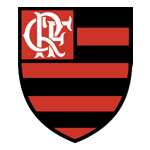Flamengo was founded on November 17, 1895

Flamengo was founded on November 17, 1895, but the official date of foundation was changed to November 15, the national holiday of the Proclamation of the Republic. Six young residents of the neighborhood wanted to compete in rowing with other boys from Rio de Janeiro and therefore decided to create the Grupo de Regatas do Flamengo, renamed Clube de Regatas do Flamengo, on October 28, 1902.
In 1911, some members of Fluminense

In 1911, some members of Fluminense, led by the medical student Alberto Borgerth, left the club to create the football department at Flamengo, then dedicated only to rowing. At first, the rowers were against it. But the new board, which took office on November 8, 1911, agreed to study the proposal. On Christmas night, Flamengo created its Land Sports Department.
Test yourself with one of these challenges 👇
Discover some interesting facts about CR Flamengo
Flamengo's mascot

Flamengo's mascot was adopted in response to a racist provocation that other fans made with the team, which had a large number of blacks among its fans. When the team entered the field, opposing fans shouted “vulture, vulture”. To turn the bird into an affront to opponents, a group of 4 friends from Flamengo decided to release a vulture with a team flag in a derby against Botafogo, on June 1, 1969. As if it had been rehearsed, the vulture flew over the fans and landed on the lawn with the flag, silencing the Botafogo fans.
Flamengo won an official anthem in 1932

Flamengo won an official anthem in 1932, composed by a former goalkeeper of the club, journalist Paulo Magalhães, who played four matches between 1918 and 1919. Lamartine Babo's anthem, “Uma Vez Flamengo, Semper Flamengo”, however, became became much more popular. It was recorded by Gilberto Alves in 1945, the club's 50th anniversary. The anthem composed by Magalhães classifies Flamengo as “champion of land and sea”. This is because the team was champion of Rio de Janeiro in soccer in 1914 and in rowing in 1916.
The name Flamengo is an allusion to the Dutch navigators

The name Flamengo is an allusion to the Dutch navigators, who were on the beach of the same name in the south of Rio, in the first half of the 17th century. In French, these people were called flamandes, flamingos. They lived in the region of Flanders, which at the time included part of France, the Netherlands and Belgium. The sports team got its name from the location of its first headquarters. Clube de Regatas do Flamengo was founded on November 17, 1895 in the mansion of Nestor de Barros, at number 22 of Praia do Flamengo. In the minutes, the founders decided to celebrate their anniversaries on November 15, the date of the Proclamation of the Republic.
Flamengo's first match was on May 3, 1912, in the field of America

Flamengo's first match was on May 3, 1912, in the field of America, against the Mangueira team, made up of workers from the Mangueira hat factory. It massacred by 15 x 2. The first goal was scored by Gustavo de Carvalho, later president of the club. On the other hand, in the first Fla-Flu, played on July 7, 1912, Fluminense won by 3 x 2. Flamengo has played three friendlies against the Brazilian national team and has not lost any: two wins and one draw
Flamengo's first mascot was Sailor Popeye, the same one from the comics

Flamengo's first mascot was Sailor Popeye, the same one from the comics. The vulture only appeared many years later. Rival fans teased the Flamengo supporters by classifying them as “vultures”. Fans ended up adopting the nickname. The original colors of Flamengo were blue and golden yellow. The switch to black and red came about a year after the club was founded and for a rather prosaic reason: the expensive imported fabrics faded easily in water and had to be replaced.
Test yourself with one of these challenges 👇
HOME














